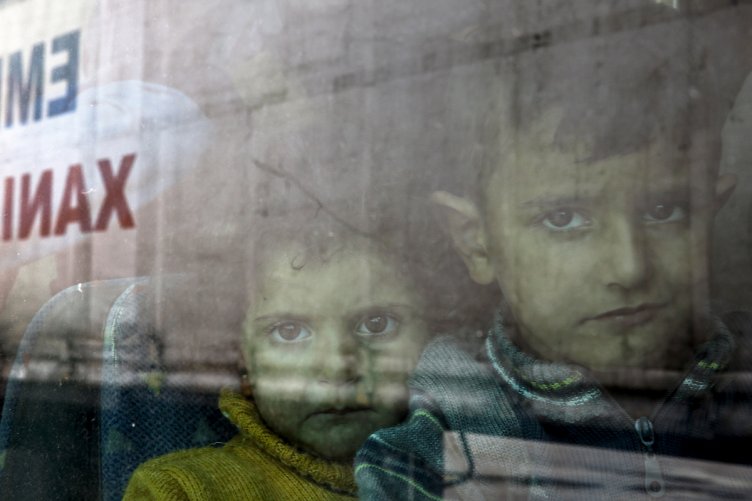
Azam was found. And the others?
Migration 9 November 2015During the last weeks, the BBC has portrayed the story of Azam, a 5-year-old Syrian refugee that a journalist noticed while documenting the current arrivals by land of refugees in Serbia. The child had a fractured jaw and was treated by a nurse under a tent. He said to be in Serbia with his uncle. A man arrived, alerted by other Syrians, he said he was the father. The man and the child got into the ambulance that was called to bring Azam to the hospital. Once the journalist reached the hospital few hours later, he discovered that the men and the child have already left. According to the doctors, they left before the child could receive all necessary treatments for his serious injury.
At this point, the concerned journalist decided to go after the child and the uncle/dad/stranger (a smuggler? A trafficker?). He printed copies of a frame from the video on Azam, showing the suffering injured child crying, he went back to the camp and he asked about Azam to every Syrian he met. He hanged flyers with the picture around the camp and other camps, around the city, all along known roots to Austria. However, no one seems to have information about the child.
Eventually, a colleague expert in Facebook found the man with the child, got in touch and discovered that the child is in Germany. Once the journalist reached Germany, he discovered that the man was indeed the uncle of Azam. He discovered that the child was run over by a car, and that once at the hospital, doctors said they could not do anything for the child. He discovered that the objective of the family was to reach Germany, so once left the hospital, they tried to reach it as soon as possible. He also discovered that the family of Azam was not informed about the accident, because the uncle did not want to worry them. The child received all necessary treatments in Germany, and he is now well, waiting for the parents to join him.
And everyone lived happily ever after. Or not?
Hundreds of unaccompanied migrant children went missing in the last years, many are still missing and many others will go missing. Already in 2010, in the UK, the British Asylum Screening Unit reported that 60% of the unaccompanied minors accommodated in UK social care centres go missing and are not found again. In Italy, the Ministry of Welfare reported that, in 2015, 62% of all unaccompanied migrant children arrived between January and May went missing. In Sweden, in 2014, 374 unaccompanied children went missing and only 59 have been tracked down, says Sweridge Radio. The situation seems even more worrying in 2015, when the coastal town of Trelleborg reported that 1,000 children from the 1,900 unaccompanied children who arrived in September had disappeared. The organisation Missing Children Europe reports that up to 50% of unaccompanied migrant children go missing from certain reception centres in Europe within 48h. According to this organisation, unaccompanied migrant children have been reported missing already when they are 8 years old.
Unaccompanied migrant children who go missing may be children who have applied for asylum or are willing to apply for asylum in another EU Member State, where they have family or where they believe that they could have a better future. Some unaccompanied children do not apply for protection either because they lack information, or because they are discouraged by the perceived length and complexity of the procedure, or because these children are approached by criminal networks looking to exploit them for profit.
It is worrying to realise that when unaccompanied children go missing, regardless of the reason, it means that the journey into exploitation and suffering continues in Europe as well. As reported by Europol’s chief of staff recently, there is a tremendous amount of crossover between those smuggling refugees across borders and gangs ensnaring people for exploitation in the sex trade or as forced labor. Victims for exploitation are “especially those of a young age, young women, the unaccompanied”.


